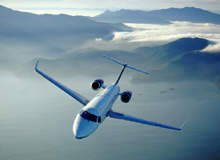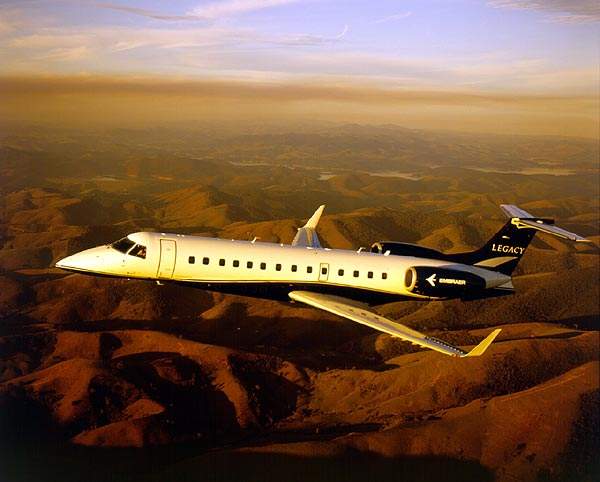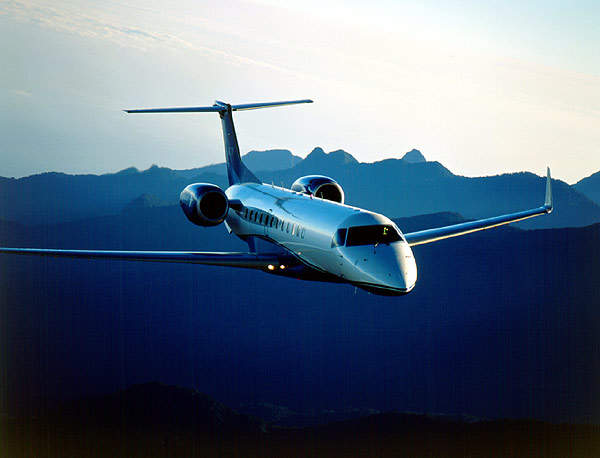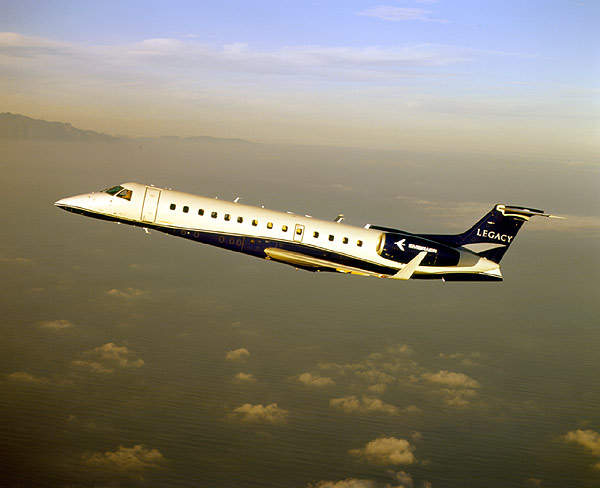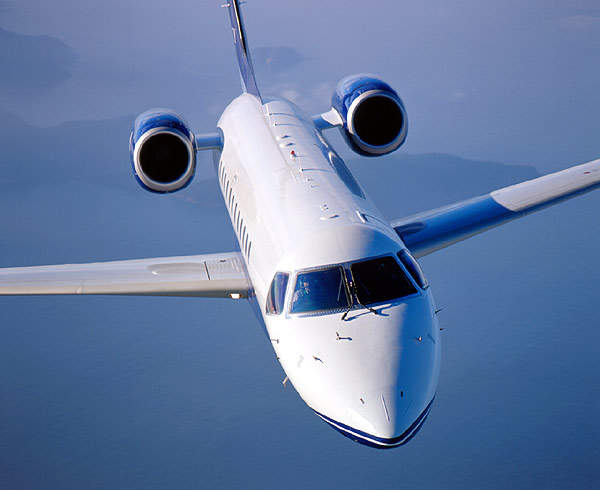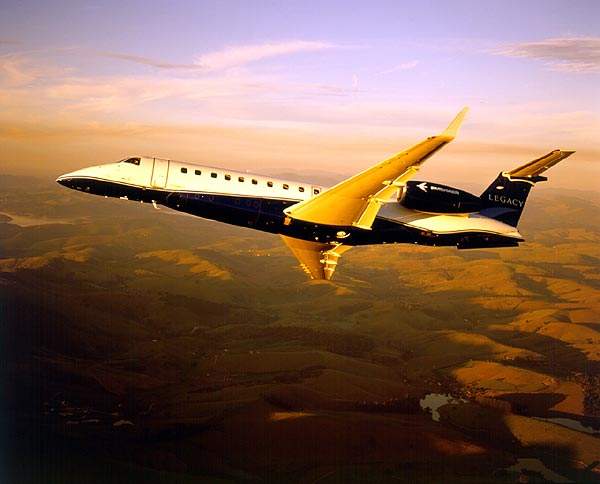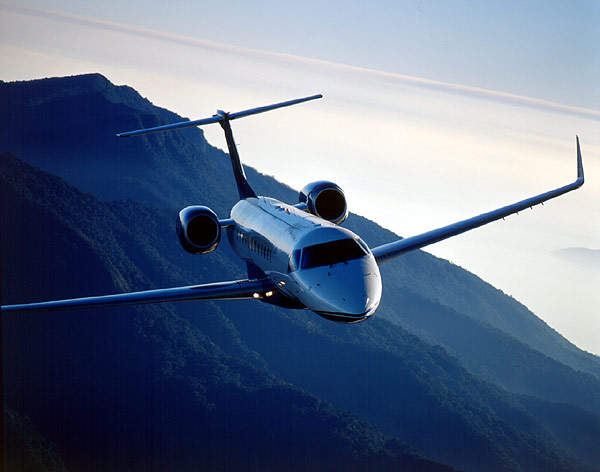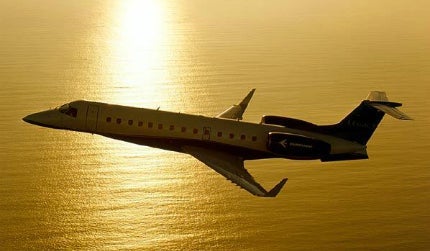
The Legacy is Embraer’s super mid-size corporate and executive jet, based on the ERJ-135 and ERJ-145 commercial regional jetliners, with the Legacy Corporate Shuttle configured with up to 19 seats and the Legacy Executive with up to 15 seats.
Embraer launched the Legacy programme at the Farnborough Air Show in the UK in July 2000 and its maiden flight took place less than one year later in April 2001. US launch customer, Indigo Air of Chicago, has cancelled orders for 25 aircraft and 50 options. However, two Legacy jets began operations with Indigo in March 2003.
More than 130 Legacy aircraft are in operation in 23 countries. More than half of these are the Legacy 600 executive version, just under half the shuttle. Five aircraft are in service with the Indian Air Force for VIP transport.
Recent orders include 13 Legacy 650 executive jets from China’s Minsheng Financial Leasing, which were ordered in October 2011, and also another order from Jackie Chan for Legacy 650 in February 2012.
Development of Legacy Aircraft
The Legacy received type certification from the Brazilian CTA in December 2001, from the European Joint Aviation Authorities (JAA) in July 2002, from the USA Federal Aviation Administration (FAA) in September 2002 and from the Russian and CIS (Commonwealth of Independent States) Interstate Aviation Committee in November 2003. At the beginning of 2004, the aircraft received authorisation from the CTA and the FAA to land and take off at airports up to 8,500ft above sea level.
Related project
Embraer Legacy 600 Executive Jet, Brazil
Legacy 600 is a super midsize aircraft developed by Embraer. The aircraft entered into service in April 2002.
In May 2008, Embraer announced two new models in the Legacy family – the mid-light Legacy 450 (expected to enter service in 2015) and the midsize Legacy 500 (expected to enter service in early 2014).
The first metal was cut for the Legacy 450 in August 2012. Legacy 450 will have a range of 4,260km (2,300nm) with four passengers or 4,070km (2,200nm) with eight passengers.
Legacy 500 will have a range of 5,560km (3,000nm) with four passengers or 5,190km (2,800nm) with eight passengers. Embraer successfully completed the maiden flight test of Legacy 500 on 27 November 2012.
The Legacy family also includes Legacy 600 and Legacy 650 aircraft. Legacy 600 and 650 are almost identical with slight modifications. Legacy 600 has a range of 3,250nm (6,019km) with eight passengers or 3,400nm (6,297km) with four passengers. More than 170 Legacy 600 jets are being operated by 26 countries worldwide.
Legacy 650 was announced in October 2009. It is an extended range aircraft equipped with advanced avionics, and larger seating capacity. It has a range of 3,900nm (7,223km) with four passengers.
Final assembly of the Legacy, systems integration and testing are carried out at Embraer’s aircraft manufacturing facilities in Sao Paulo. Embraer has subcontracted the manufacture of some sections and subassemblies of the aircraft: Norton supplies the nose radome, Sonaca of Belgium the rear and centre section of the fuselage, Gamesa of Spain the wings, and ENAER of Chile the fin and tailplane.
In May 2004, Embraer announced improvements to the executive version, including aerodynamic and fuel system improvements and the introduction of more powerful Rolls-Royce AE3007-A1E engines.
Embraer has raised the operational ceiling for the Legacy to 12,500m (41,000ft). The new capability is available as an upgrade to Legacy owners.
Construction of Embraer Legacy
Although the Legacy is derived from the ERJ-135 and ERJ-145 regional jetliner family, the basic airframe underwent a considerable number of changes transforming it into a new aircraft. The changes include the addition of winglets and fuselage strakes, underbelly and cargo compartment tanks, higher-rated turbofan engines, new fuel system, higher Maximum Mach Operation (MMO), an entirely new main cabin and advanced avionics suite.
The aircraft has a circular cross-section fuselage, rear-mounted high by-pass ratio engines, low-mounted swept wings and a T-tailplane. The wings are of two-spar wing design with a third spar to support the landing gear. The wing leading edges are made of aluminium.
The wings are fitted with winglets, which provides increased lift and improved efficiency with reduced drag of the tip vortex.
The T-tail is of aluminium box construction with aluminium leading edges on the tailplane. The fin leading edge is of composite construction.
Embraer Legacy flight deck
The full glass cockpit includes a state-of-the-art Rockwell Collins Pro Line Fusion avionics suite and software, which can be easily upgraded for future requirements. It includes a dual flight management system (DFMS), which minimises the crew workload. The avionics suite is integrated with dual digital air data computers, head-up guidance system (HGS), synthetic vision system (SVS), enhanced vision system (EVS), onboard maintenance system (CMC), a TCAS II traffic alert and collision avoidance system, and an Enhanced Ground Proximity Warning System (EGPWS).
The instrumentation includes a Flight Dynamics head-up display that gives the aircraft CAT III landing capability. Five electronic flight and information system displays, each measuring 20.3cm x 18cm (8in x 7in) include two multi-function displays, two primary flight displays and an Engine Indication and Crew Alert System (EICAS).
The aircraft has a Global Positioning System (GPS), Laseref inertial reference system, a Primus 1000 colour weather radar with turbulence detection, satellite communications and a dual Primus II radio communications.
Cabin
The Legacy has a 40m³ (1,410ft³) interior and the cabin is built with fine-quality hardwoods, fabrics and finishes. The interior layout options range from a two abreast 20-seat Corporate Shuttle version to the Government VIP / Executive version cabin in a 12-seat arrangement with sideboard, tables and three-seat sofa.
The passengers can have Airshow systems, DVD, real-time communications, telephone and fax in the cabin. The cabin can be furnished with working tables for staff meetings and individual workstations at the required seats. A wireless high-speed (up to 432kbps) digital data connection, using the Inmarsat Swift64 Mobile Network, will be available as an option or upgrade in mid-2005.
There is an airstairs passenger door, a wardrobe and full service galley at the front of the cabin. The oxygen system is supplied by EROS. The cabin and baggage compartments are air conditioned and pressurised by a Hamilton Sundstrand air-conditioning system and Liebherr Aerospace pressurisation system.
The Legacy 600 has an in-flight accessible, air-conditioned and pressurised baggage compartment with 6.8m³ capacity, allowing 453kg of luggage to be carried. The baggage compartment is located to the rear of the cabin between the two engines.
Legacy aircraft engines
The Legacy is powered by higher rated engines than the ERJ-135 aircraft. The Legacy Executive aircraft has two rear-mounted Rolls-Royce AE 3007 A1P turbofan engines, rated at 3,368kg and mounted on pylons supplied by Sonaca of Belgium. In May 2004, Embraer announced that the Legacy engine would be uprated to the AE 3007 A1E.
International Nacelle Systems supplied the engine nacelles and the optional clamshell thrust reversers.
The engines are fitted with Full Authority Digital Engine Control (FADEC) and the engine air intakes are fitted with an engine bleed air anti-icing system. The Legacy Corporate Shuttle is powered by Rolls Royce AE 3007 A1/3 each with a thrust rating of 3,201kg.
The aircraft is equipped with a Parker Hannifin fuel management system. The aircraft has integral wing tanks, belly tanks and aft fuel tanks in new extended fairings on the underwing providing a maximum usable fuel of 8,030kg in the Legacy Executive and 12,510kg in the Legacy Corporate Shuttle.
The aircraft is fitted with a Smiths electrical power system and a tail mounted APIC APS-500 auxiliary power unit providing 18.6kW.
Landing gear
EDE supplied the retractable tricycle-type landing gear and the subcontractor, Liebherr, produced the forward retracting nose landing gear. The main units retract inward into the wing and fuselage landing gear fairings. The landing gear is fitted with a Hydro-Aire brake-by-wire control system, Goodrich wheels and carbon brakes.

